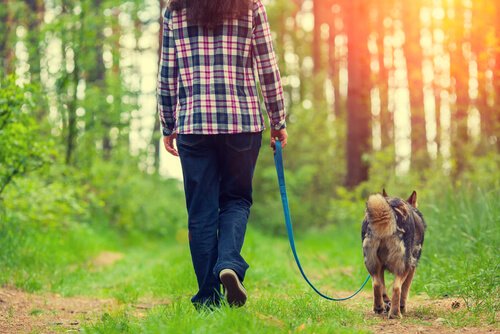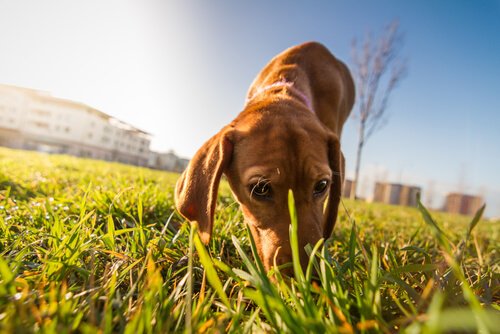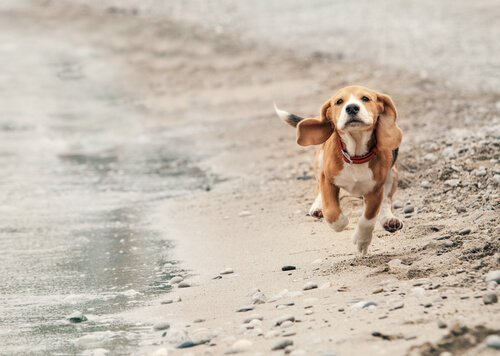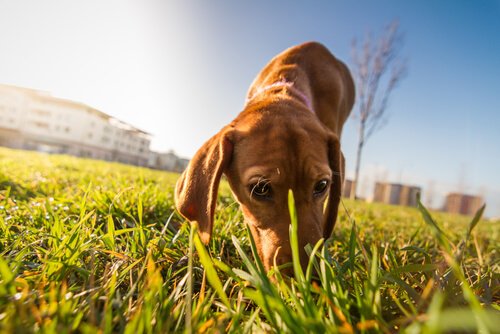4 Steps to a Better Walk with Your Dog

What is a high-quality walk?
A high-quality walk is very important for a dog. It lets him enjoy being outside, do his business peacefully, interact with other dogs, and pick up many different smells.
It is one of the times during the day when he can relax. Therefore, a high-quality walk is essential for having a happy and well-balanced dog. If the walks are not good, he will be afraid when outside or have many bad experiences; other problems will always arise.
Besides these ideas for improving the walk with your dog, a high-quality walk includes letting him enjoy all the smells that he can. It also includes letting him loose without a leash to explore as he pleases in places where it is allowed.
1. No more pulling on the leash
It is undeniable that a happy and relaxing walk does not involve pulling on the leash: the dog should not pull and neither should we. On the street, the leash is what connects us to our pet, and transmits a lot of information: anger, hurry, stress, or on the contrary, confidence and relaxation.

Do not use extendible leashes, since they are always tense. Choose a normal leash and pay attention to how you control it: do you walk and make your dog stop without pulling him? Also teach him how to walk without pulling and your walks will get instantly better.
Many dogs that wear a collar develop serious health problems from pulling on the leash. Choose a harness that is good for both of you; there are many different types, and it relieves the pressure on your dog’s neck.
2. A longer leash
Almost all of the leashes that are seen on the street are very short: with a leash like that, the dog actually does not have any space to move without pulling. Even if it seems paradoxical, a leash that is two meters long controls the dog better than a leash that is half a meter long.
If the dog has more space to walk by your side, he will pull less. In turn, this will annoy you less when walking. He will be able to move about from smell to smell without pulling you and without having to be moved. A leash that is at least a meter and a half long is your best bet; you will see the difference and the comfort.
3. Free walk
A free walk is a challenge for your dog: when leaving the house, you follow him. Let him decide where he wants to go and how long he wants to stay at each smell or each corner.

A free walk is not rushed and there are no orders. The dog decides what interests him. Maybe he wants to always walk the same route. Or, perhaps wants to arrive early at the park. Some days, maybe he’s more interested in discovering a new street.
Dogs that are used to following orders could get overwhelmed and not know where to go for the first free walks. Give him a vote of confidence and let him take the initiative. It is a very simple way to improve walks with your dog. You will be surprised to see what places actually interest him the most.
4. Proactivity: unpleasant situations
Do not force your pet to go through unpleasant situations. Be one step ahead of him. You know your dog better than anybody else, and you know what he likes and what he doesn’t. You know his fears and when he has a bad time. Avoid them during his walks, since exposing him to these situations will not bring anything positive.

For example, if your dog is afraid of the garbage truck and you see it coming from far away, change the route so you don’t cross its path. If your dog does not get along well with other dogs, cross the street to avoid passing them on the sidewalk.
This way, you eliminate many sources of stress or fear. Let your dog distance himself from what worries him so he can discover that it is not a threat; his fears do not completely disappear, but rather, are still there. By avoiding these problems, walks will significantly improve.
These ways to improve walks with your dog are based on details. They seem to be small things, but are important in your dog’s eyes. If we make these changes, we are saving our pets from huge sources of stress. We are allowing him to make decisions about his free time. That is, we are improving our pets’ free time by having truly high-quality walks.